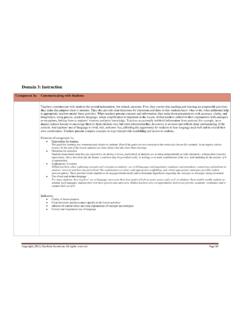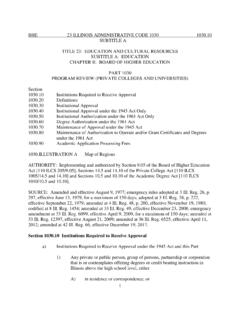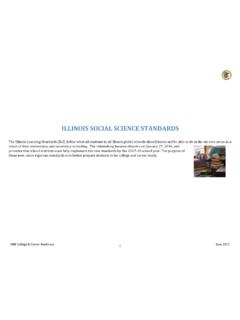Transcription of Deep learning theory lecture notes
1 Deep learning theory lecture notes Matus Telgarsky 2021-10-27 (alpha). Contents Preface 3. Basic setup: feedforward networks and test error decomposition .. 4. Highlights .. 6. Missing topics and references .. 6. Acknowledgements .. 7. 1 Approximation: preface 7. Omitted topics .. 8. 2 Classical approximations and universal approximation 8. Elementary folklore constructions .. 9. Universal approximation with a single hidden layer .. 12. 3 Infinite-width Fourier representations and the Barron norm 14. Infinite-width univariate approximations .. 15. Barron's construction for infinite-width multivariate approximation .. 15. Sampling from infinite width networks .. 19. 4 Approximation near initialization and the Neural Tangent Kernel 23. Basic setup: Taylor expansion of shallow networks.
2 23. Networks near initialization are almost linear .. 26. Properties of the kernel at initialization .. 30. 5 Benefits of depth 33. The humble mapping.. 34. Separating shallow and deep networks .. 35. Approximating x2 .. 39. Sobolev balls .. 42. 6 Optimization: preface 47. Omitted topics .. 48. 7 Semi-classical convex optimization 49. Smooth objectives in ML .. 49. Convergence to stationary points .. 50. Convergence rate for smooth & convex .. 53. Strong convexity .. 56. Rates when strongly convex and smooth .. 57. 1. Stochastic gradients .. 59. 8 Two NTK-based optimization proofs near initializatikon 63. Strong convexity style NTK optimization proof .. 63. Smoothness-based proof .. 71. 9 Nonsmoothness, Clarke differentials, and positive homogeneity 71.
3 Positive homogeneity .. 72. Positive homogeneity and the Clarke differential .. 73. Norm preservation .. 75. Smoothness inequality adapted to ReLU .. 76. 10 Margin maximization and implicit bias 77. Separability and margin maximization .. 78. Gradient flow maximizes margins of linear predictors .. 80. Smoothed margins are nondecreasing for homogeneous functions .. 83. 11 Generalization: preface 85. Omitted topics .. 85. 12 Concentration of measure 86. sub-Gaussian random variables and Chernoff's bounding technique .. 86. Hoeffding's inequality and the need for uniform deviations .. 88. 13 Rademacher complexity 89. Generalization without concentration; symmetrization .. 92. Symmetrization with a ghost sample .. 92. Symmetrization with random signs.
4 93. Generalization with concentration .. 94. Example: basic logistic regression generalization analysis .. 95. Margin bounds .. 97. Finite class bounds .. 98. Weaknesses of Rademacher complexity .. 99. 14 Two Rademacher complexity proofs for deep networks 99. First layer peeling proof: (1, ) norm .. 99. Second layer peeling proof: Frobenius norm .. 102. 15 Covering numbers 105. Basic Rademacher-covering relationship .. 105. Second Rademacher-covering relationship: Dudley's entropy integral .. 106. 16 Two deep network covering number bounds 109. First covering number bound: Lipschitz functions .. 109. Spectrally-normalized covering number bound .. 110. 17 VC dimension 113. VC dimension of linear predictors .. 115. VC dimension of threshold networks.
5 117. 2. VC dimension of ReLU networks .. 118. References 120. Preface Philosophy of these notes . Two key ideas determined what has been included so far. 1. I aim to provide simplified proofs over what appears in the literature, ideally reducing difficult things to something that fits in a single lecture . 2. I have primarily focused on a classical perspective of achieving a low test error for binary classification with IID data via standard (typically ReLU) feedforward networks. Organization. Following the second point above, the classical view decomposes the test error into three parts. 1. Approximation (starts in section 1): given a classification problem, there exists a deep network which achieves low error over the distribution. 2. Optimization (starts in section 6): given a finite training set for a classification problem, there exist algorithms to find predictors with low training error and low complexity.
6 3. Generalization (starts in section 11): the gap between training and testing error is small for low complexity networks. Remark (weaknesses of this classical approach). Recent influential work suggests that the classical perspective is hopelessly loose, and has poor explanatory power (Neyshabur, Tomioka, and Srebro 2014; Zhang et al. 2017). Follow-ups highlight this looseness and its lack of correlation with good test error performance (Dziugaite and Roy 2017), and even suggest the basic approach is flawed (Nagarajan and Kolter 2019); please see section for further discussion and references. The reasons for keeping with this approach here are as follows: 1. It appears that all of these negative results consider the consequences of worst-case behavior in one of these three terms on the other two.
7 Here instead we study how they inter-connect in a favorable way. A common them is how they all work together with low complexity models on reasonable data. 2. Even if the preceding point is overly optimistic at times, this decomposition still gives us a way to organize and categorize much of what is known in the field, and secondly these ideas will always be useful at least as tools in a broader picture. Formatting. These notes use pandoc markdown with various extensions. A current html version is always at , and a current pdf version is always at https: Owing to my unfamiliarity with pandoc, there are still various formatting bugs. [ mjt : Various todo notes are marked throughout the text like this.]. 3. Feedback. I'm very eager to hear any and all feedback!
8 How to cite. Please consider using a format which makes the version clear: @misc{mjt_dlt, author = {Matus Telgarsky}, title = {Deep learning theory lecture notes }, howpublished = {\url{ }}, year = {2021}, note = {Version: 2021-10-27 (alpha)}, }. Basic setup: feedforward networks and test error decomposition In his section we outline our basic setup, which can be summarized as follows: 1. We consider standard shallow and deep feedforward networks. 2. We study mainly binary classification in the supervised learning setup. 3. As above, we study an error decomposition into three parts. Although this means we exclude many settings, as discussed above, much of the work in other settings uses tools from this most standard one. Basic shallow network.
9 Consider the mapping m aj (wjT x + bj ). X. x 7 . j=1. is the nonlinearity/activation/transfer. Typical choices: ReLU z 7 max{0, z}, sigmoid 1. z 7 1+exp( z) . ((aj , wj , bj ))m j=1 are trainable parameters; varying them defines the function class. Sometimes in this shallow setting we freeze (aj )m j=1 , which gives a simple model that is still difficult to analyze ( , nonconvex). We can think of this as a directed graph of width m: we have a hidden layer of m nodes, where the jth computes x 7 (wjT x + bj ). Define weight matrix W Rm d and bias vector v Rm as Wj: = wjT and vj := bj . The first layer computes h := (W x + b) Rm ( applied coordinate-wise), the second computes h 7 aT h. Basic deep network. Extending the matrix notation, given parameters w = (W1 , b1.)
10 , WL , bL ), f (x; w) := L (WL L 1 ( W2 1 (W1 x + b1 ) + b2 ) + bL ). (1). j is now a multivariate mapping; in addition to coordinate-wise ReLU and sigmoid, we can do softmax z exp(z), max-pooling (a few coordinates of input replaced with their maximum), attention layers, and many others. We can replace x 7 W x + b with some compact representation while still preservering linearity, , the standard implementation of a convolution layer. [ mjt : Maybe I will add the explicit formalisms somewhere?]. 4. Often biases (b1 , .. , bL ) are dropped; the handling of these biases can change many elements of the story. Typically L is identity, so we refer to L as the number of affine layers, and L 1 the number of activation or hidden layers. Width now means the maximum output dimension of each activation.





